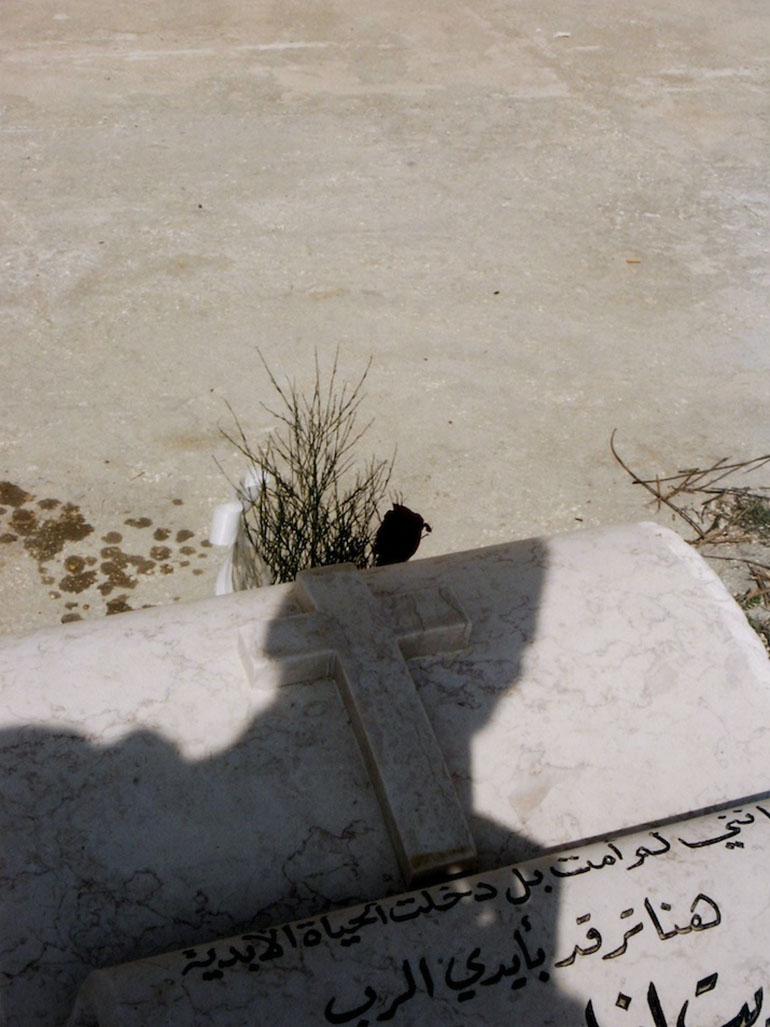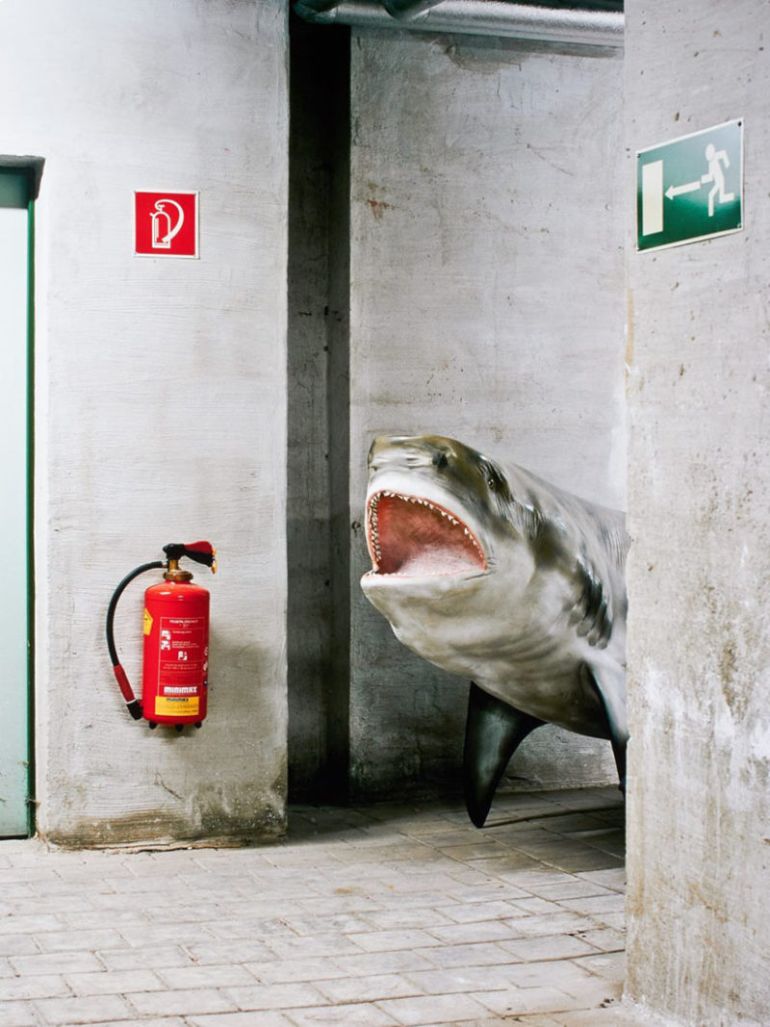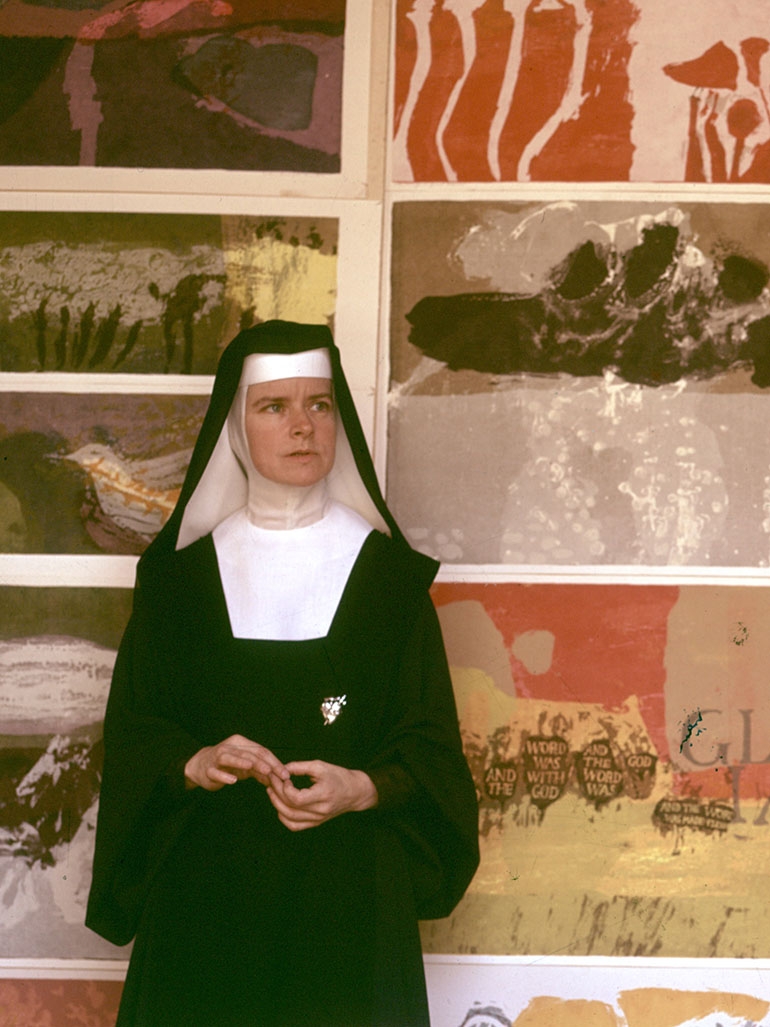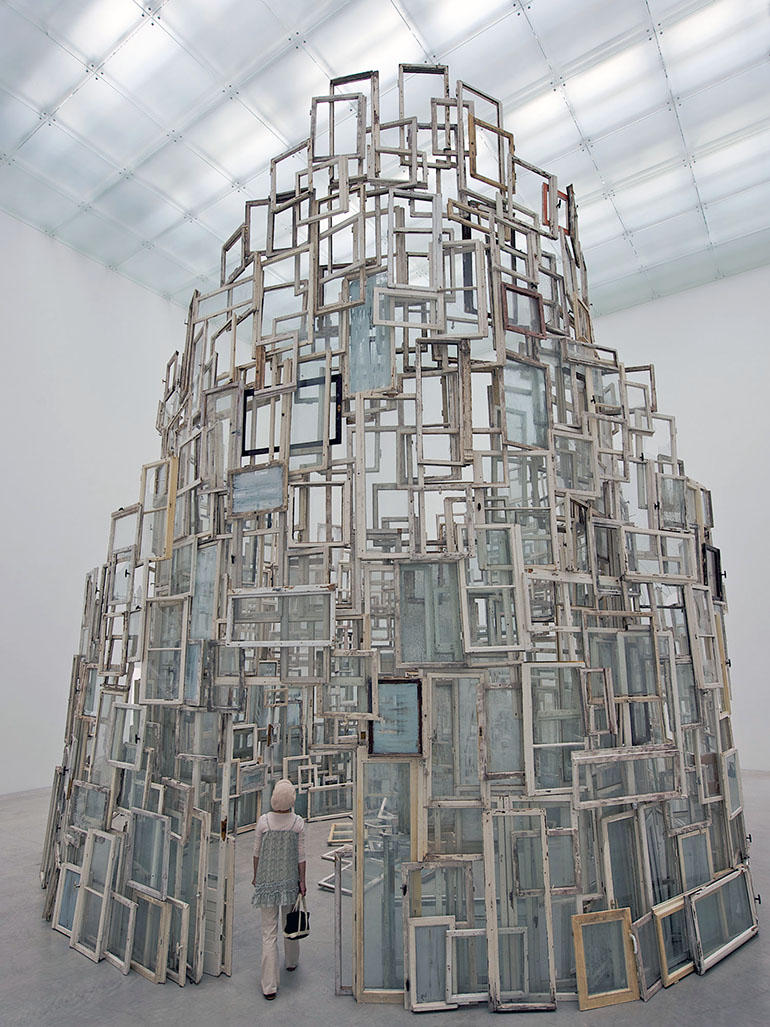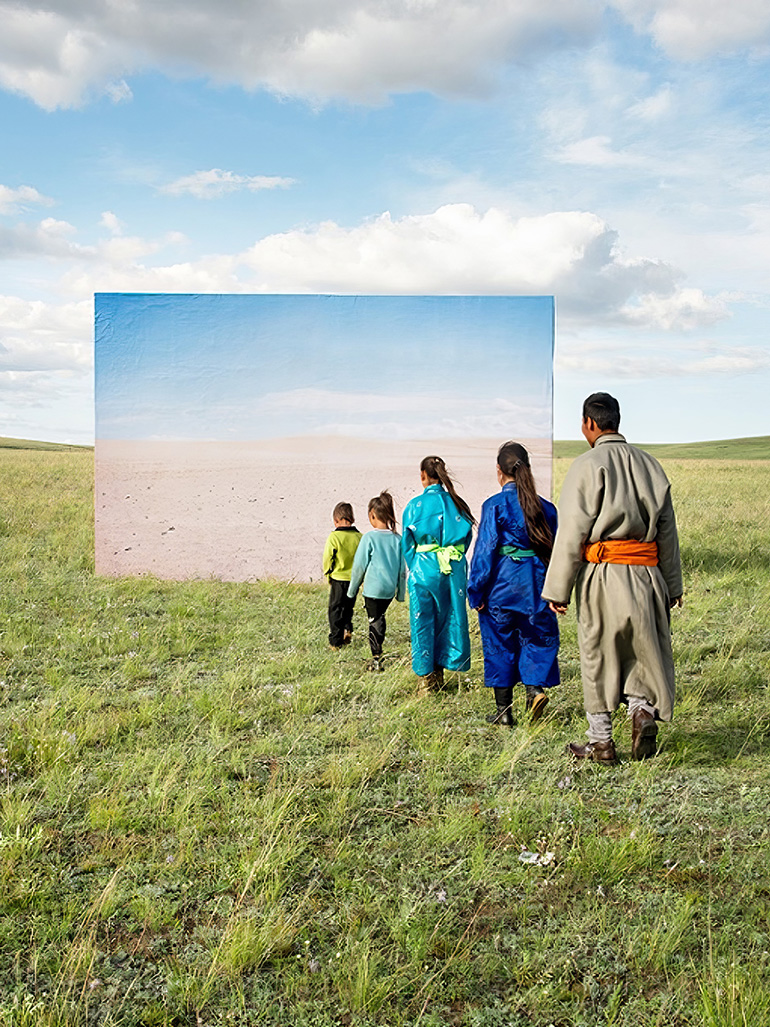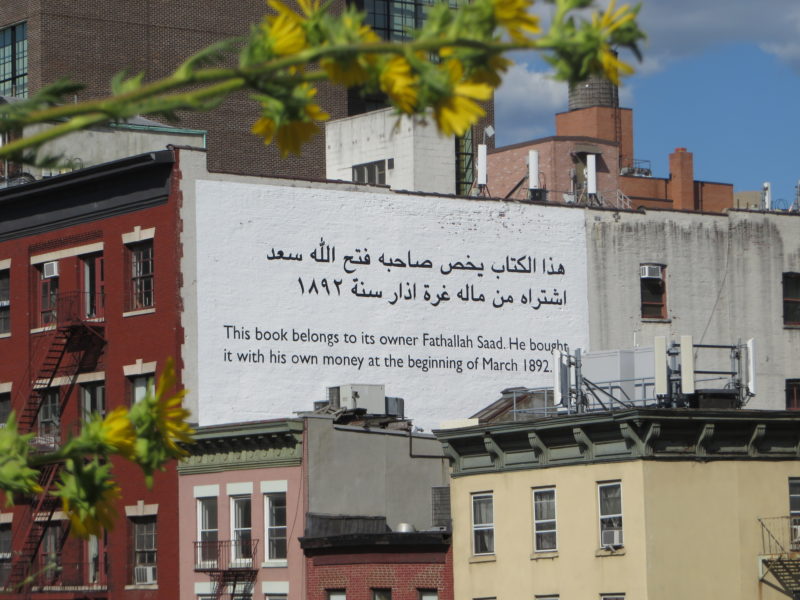
Introduction
Emily Jacir 1 is a Palestinian 2 artist and a filmmaker. She was born in Bethlehem in 1973 and spent most of her life in Saudi Arabia. She later attended high school in Italy 3 and eventually attended Memphis College of Arts where she graduated with an art degree. One of her most renowned work is Ex Libris.
Ex Libris
Emily Jamir’s ex LIBRIS functions as the documentation of about 30,000 books. These books were part of those looted from Palestine by Israelian authorities when Palestinians were being displaced. All this took place in 1948 during the creation of Israel as a state. The project spans various techniques, including film, photography, sound, writing, video, archiving, and performances.
The books
Ex Libris honors the about 30,000 books that used to belong to Palestine homes, libraries, and institutions. Now, approximately six thousand of these books are kept in the Jewish National and University Library in Jerusalem. They are categorized as Abandoned Property (AP).
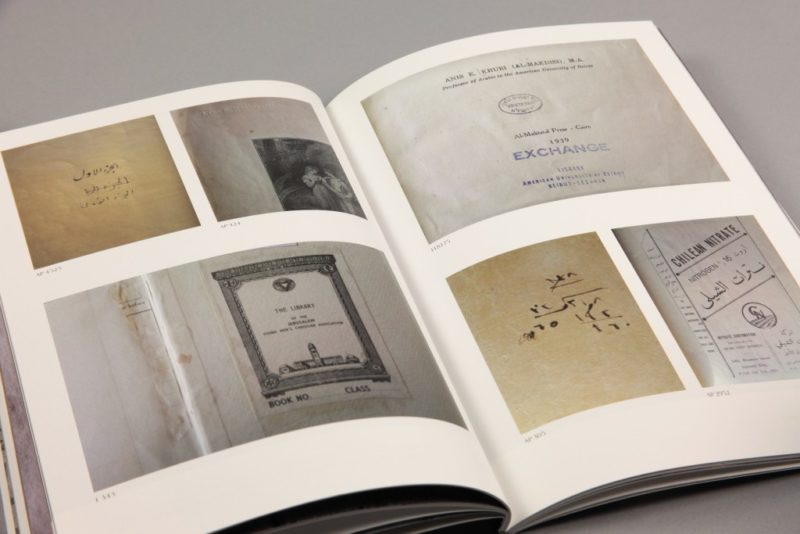

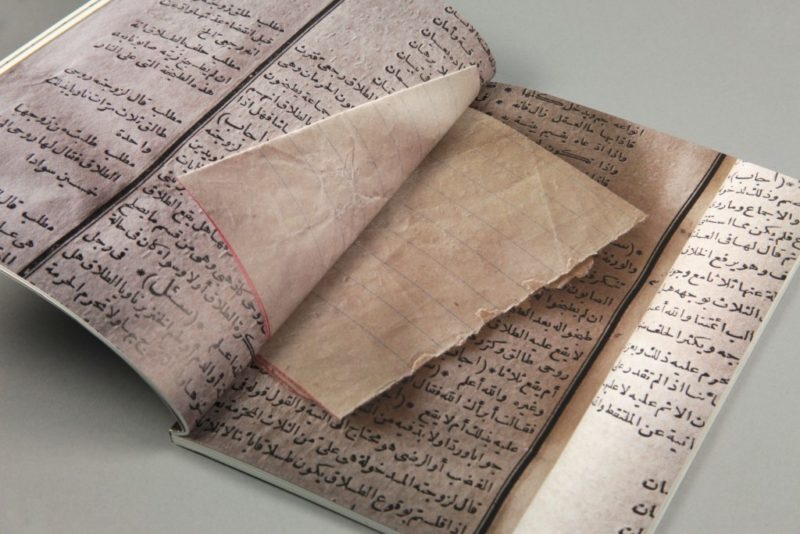
Jacir’s work process
Emily Jacir photographed abandoned books for two years using her cellphone Nokia N8. Jacir thought that there’s no other way to represent oblivion and loss but through anger, spark and strong imagery, videos, or photographs capturing the evidence.
Her first visits to the library focused entirely on documenting inscriptions in the books. This means she wanted to document the names of the authors. As she worked further, she got more interested in the small traces that she found in the books, including marginalia, stains, scribbles, and paper scraps. In one photo, you will notice a scrap of paper with a fair-haired, haloed Jesus with his hands pointing to his heart. This might be a prayer card or a sleeve ripped from the inside of a bible. This image was likely used for worship.
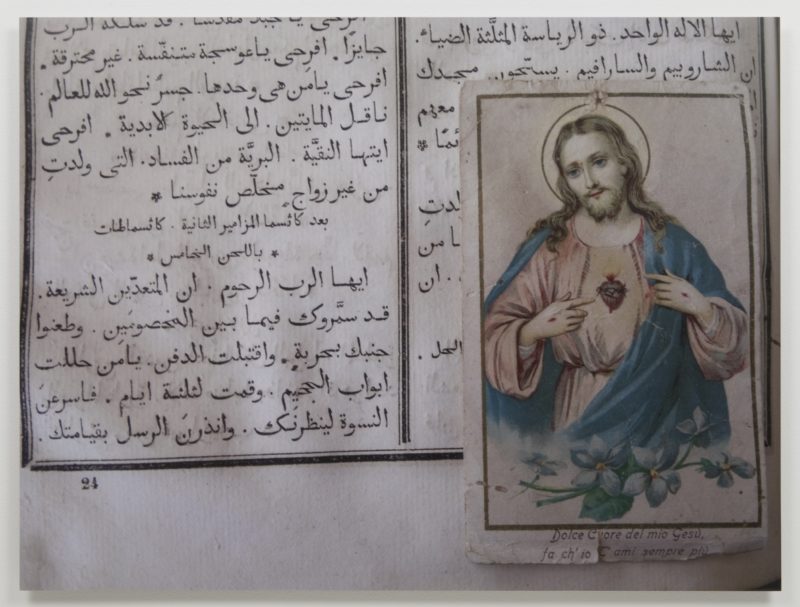
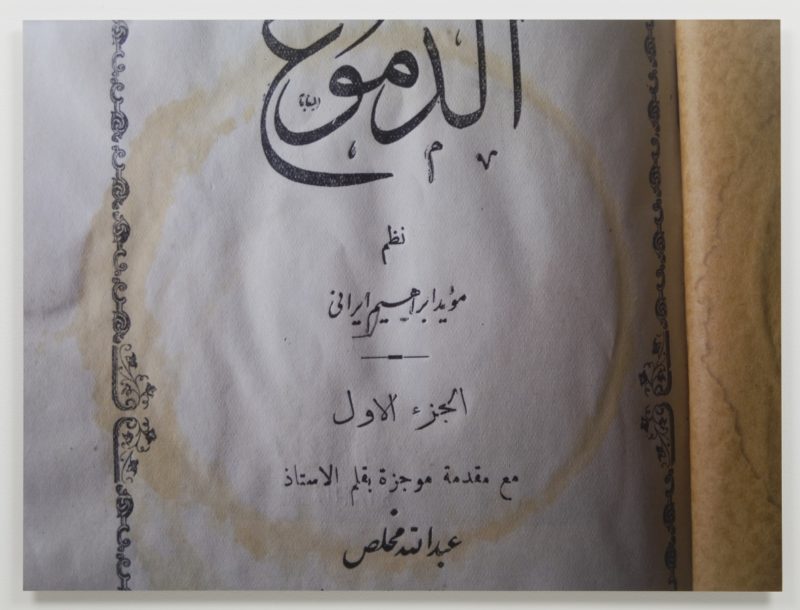
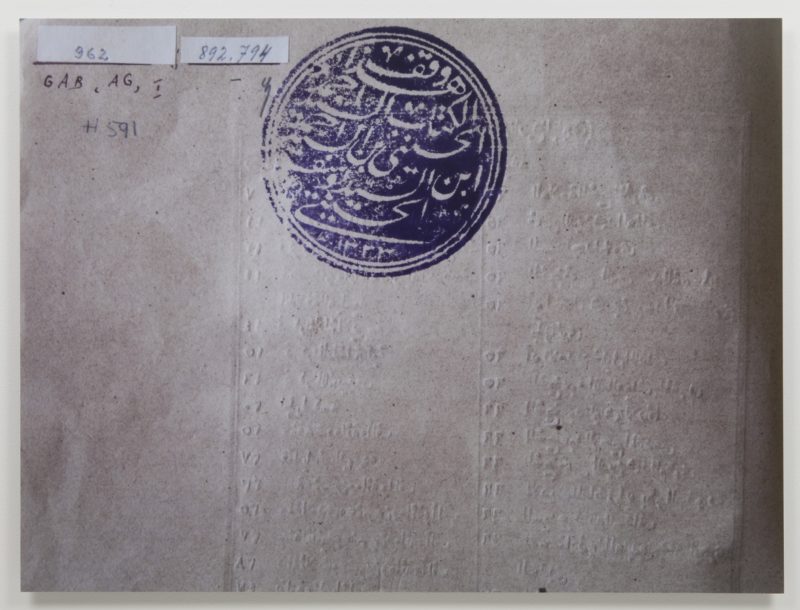
How were the books selected?
Emily also checked almost all the books in the library, especially those she found in the library’s Oriental reading room. She wanted to check for the ones that had been assimilated into the main library system.
Jacir eventually realized that the authorities selected all of these books for particular purposes. She now wanted to see which among them got discarded. You may think that these books were deemed inconsequential and trivial. Maybe the colonizer thought they were very unworthy of preserving and collecting them. Emily then went to see the books that bypassed the Abandoned Publications category.
Further research in Germany
The next thing was to visit Murhard Library in Kassel, Germany, where she noticed a couple of remaining books that were not damaged during the time of Fridericianum 4 when the city was bombed in 1941.
The Librarian said that about sixty to eighty bombs hit the Fridericianum, but not even one of them hit the tower. Emily later conducted a couple of researches on the region of Hesse. She wanted to connect the times when this region belonged to the American Zone of occupation and modern times.
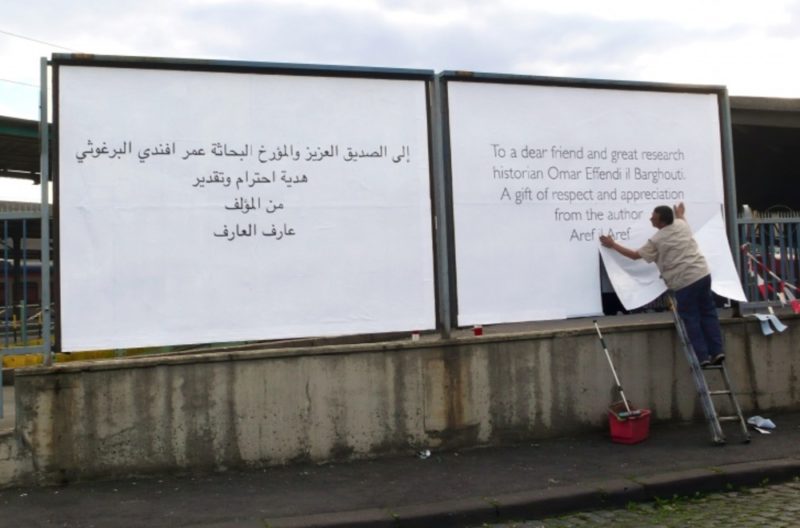

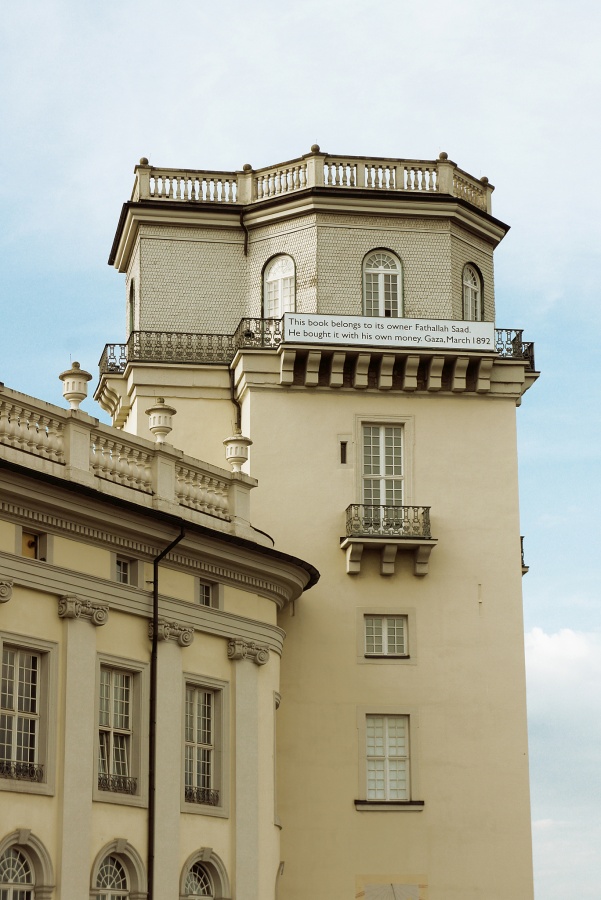
Exhibition & Nothingness
Her work now points to this existing nothingness, the endless shadow of this emptiness. The exhibitions rooms that show Ex Libris are black, empty. There’s no banner, no noticeable explanation, and also no documentations pointing out and explaining the situation at hand. This all aimed at displaying the emptiness of that echo.
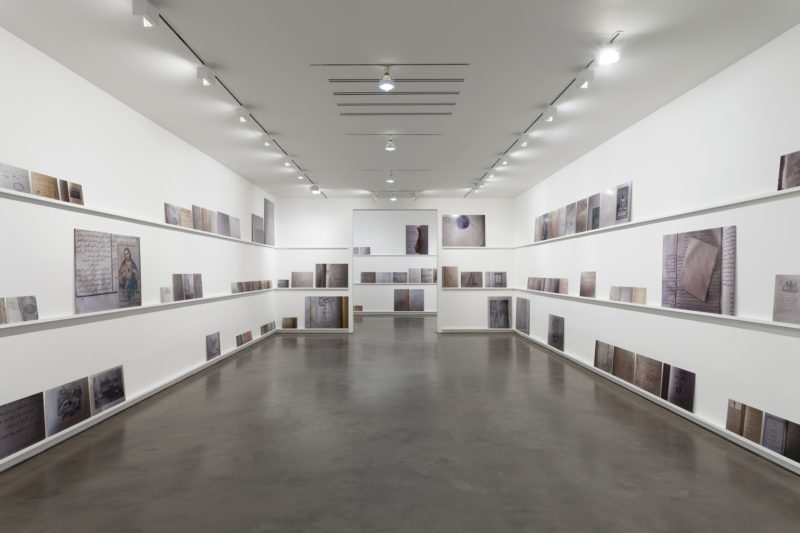
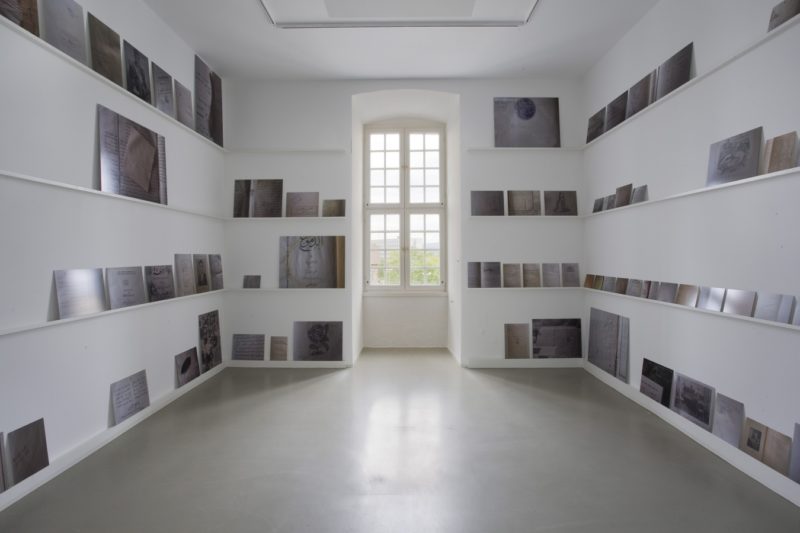
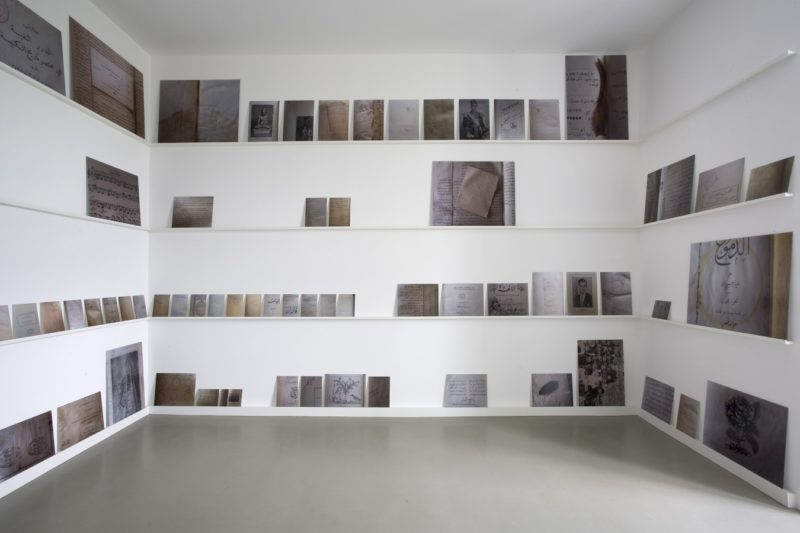
Jacir also visited the Offenbach Archival Depot. In this place, the most extensive book restitution project took place in the history of the region. Research shows that Offenbach was designated on May 1st, 1946, as a sole archival depot in the American zone of Occupation for the handling of archives and looted books. This was a perfect match because Offenbach was by then the epicenter of European typography.
Analysis
Ex Libris’s primary focus is on the strong relationship that existed and the one that now exists between the books and the land. It also focuses on the impression of custodianship and salvation. The project addresses the looting and destruction of books and raises the hard question of expulsion and compensation. The books show that they have suffered further damage through pre-selection, though the restitution of Palestinian property has not yet taken place.
